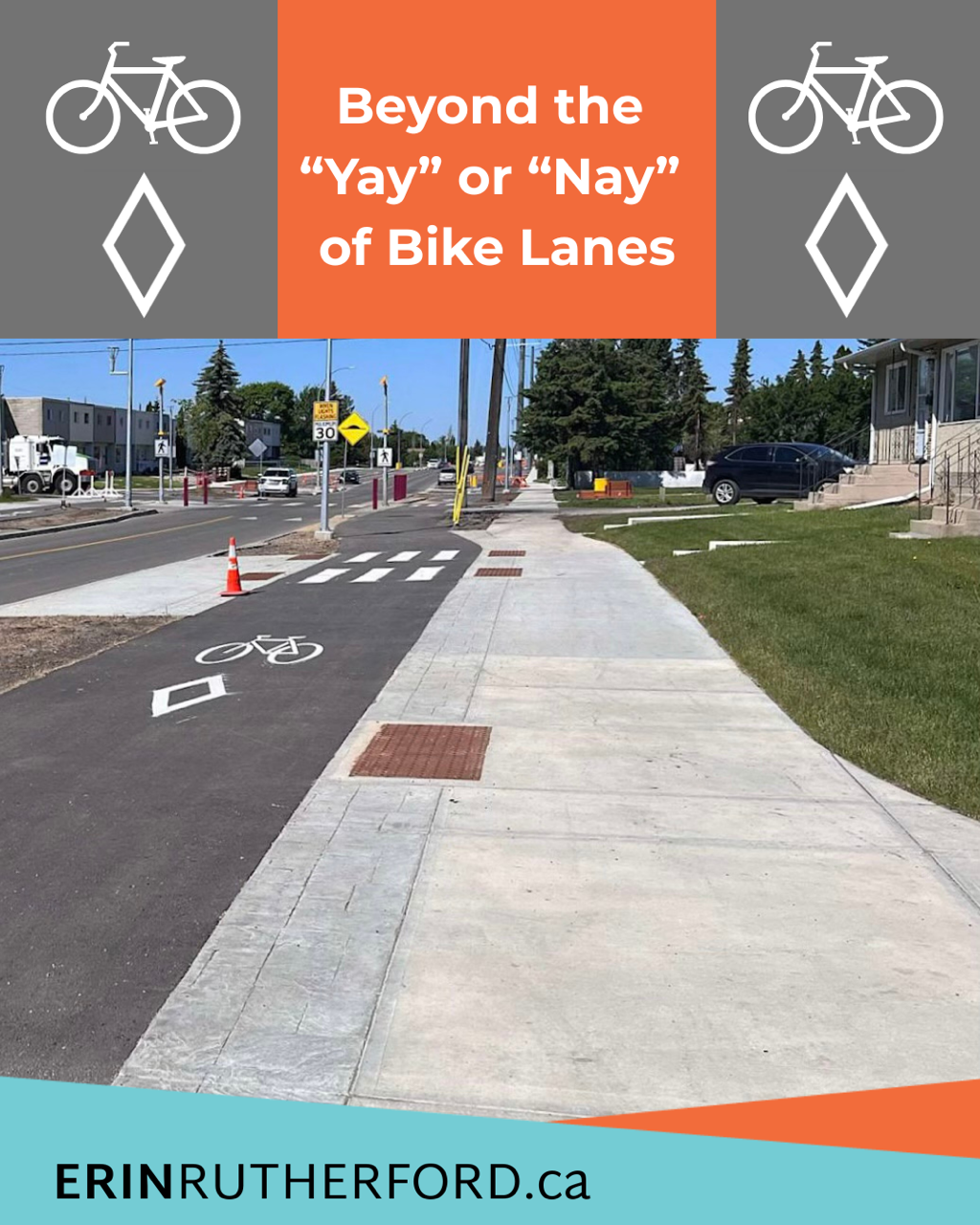Beyond the “Yay” and “Nay” of Bike Lanes
Discussions on active pathway infrastructure, like bike lanes, can be polarizing with people being labelled either “yay” or “nay.” I see it as being more nuanced than that, so I’d like to share my thoughts on how we’re building an active city, as directed by the goals in Edmonton's City Plan.
Let’s start with what I hear many people agree on: Edmontonians want year-round safe, effective and efficient transportation across our city. Whether you’re a driver, cyclist, pedestrian, or public transit user, Edmontonians count on the City for strong transportation infrastructure.
One of the City’s goals is to support Edmontonians in taking 50% of daily trips by transit and active modes of transportation. To meet this goal requires strategic growth of the active pathways network and a greater focus on maintenance and accessibility in all seasons.
When the City builds active pathways, there are also maintenance costs. The stark reality is the City is not able to clear snow or maintain pathways at a level that makes walking or rolling viable across Edmonton in all seasons. I’ve talked to senior residents, folks in wheelchairs, and bike commuters who can’t easily get around because their route is too hazardous. It’s clear to me that accessibility of our active mode infrastructure is an issue.
Building greater transportation choice isn’t just about expanding our networks. It’s about making our existing infrastructure accessible year-round. Additionally, infrastructure and maintenance investments must be equitable, meaning that all areas of the city, and therefore all citizens, benefit from them.
Let’s use snow clearing as an example. A report in 2022 highlighted a significant gap between the City's desired snow clearing service level, and what is actually achievable. This discrepancy was due to Edmonton’s expansion, and years of stagnant or decreased funding for snow and ice control. The report prompted Council to approve a 20 per cent increase to the overall snow clearing budget, which included incremental increases for active pathways. However, reaching the desired service levels for roads and active pathways requires even more funding. The price for improving snow clearing on active pathways, according to that 2022 report, was an estimated $34.4 million in additional tax-supported funding, before accounting for inflation and any growth to the network.
As budgets are not bottomless, I’m concerned about unreliable, inconsistent and inequitable service in different areas of the city. Snow clearing timelines are getting longer for many existing bike lanes, which is counter to encouraging year-round active transportation.
So, we're left with a dilemma regarding active pathways and limited resources. Right now, we are continuing to expand the bike network, knowing that snow clearing, repairs, and overall service levels will not be ideal on all of these paths. Alternatively, we could put more focus on enhancing usability of existing paths, especially considering our obligations to accessibility and the City Plan’s vision for an Edmonton that is inclusive, equitable and compassionate.
Through conversations with Edmontonians who have diverse needs and perspectives, I’m hearing that the City should prioritize strategic improvements that have a big impact, particularly when it comes to enhancing accessibility. Based on that perspective, Council should focus on filling missing links, improving snow clearing, building more secure bike lock-ups, and putting lighting on dark pathways. This will create conditions for more usage, regardless of time of year, or time of day.
My point is that we need to keep talking about this issue without polarizing the conversation as “yay” or “nay.” There’s no perfect path forward. Active transportation is important and work on it needs to continue. Our ability to move around the city affects nearly every aspect of our daily lives. It impacts our ability to work and play, and it has significant accessibility, health, social and climate implications. It’s a challenge I take seriously, and I’m always available to listen to your thoughts on how best to meaningfully support Edmontonians move from point A to B.

